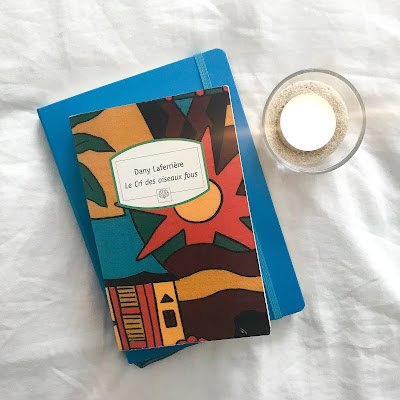I found Yaa Gyansi's novel Homegoing on my to-read list when I was choosing a title for a bookclub with my teenage niece and her mother at the beginning of lockdown. It made it on my list via bookstagram (though I can't quite recall who exactly made the recommendation). The novel was published by Penguin in 2016 and is 220 pages long (Kindle edition noted 315 pages). It consists of two parts with 14 chapters. The story spans a period of three hundred years, following the descendants of two Ghanaian sisters. I will explore the format and style of the book as well as discuss some of the key themes alongside my personal reflections.
The novel begins with an Akan proverb that notes the importance of every member of the family. Gyansi then provides a family tree for the reader to refer back to. The structure of the novel follows a generational format, where each chapter follows a character of the next generation of one of the family lines. As such, the chapters are named after the focalised character. Homegoing is written with a third person narrator who focalises into the central character of the chapter, and through their interactions the reader engages with auxiliary characters. I found that this generational approach to the chapters was really effective and powerful in exploring how social conditions changed (if at all). It also permitted the author to navigate and demonstrate the effects of intergenerational traumas as well as lost lineage and identity. Since each character represents a familial generation as well as a socio-political environment, their chapter can almost be read as a short story, albeit interwoven with the preceding and succeeding narratives.
Homegoing begins in Ghana at the beginning of colonisation and is implicated in the slave trade. The social dynamics are complex and hierarchies are being continuously challenged. This environment brings to the fore the dehumanising and racist discourse at the heart of these injustices. As one family line remains in Ghana and the other is sent to toil in America, Gyansi demonstrates how whiteness, whether in the context of slavery or colonisation and missionary efforts, shaped the characters' experiences on the two continents. That being said, she also highlights how colonisation and slavery have morphed to take on other forms in the present (i.e. modern day prison systems). It provokes debate as to how deeply rooted the problem really is to this day.
Women and womanhood are a huge theme in the novel, and they explored from so many angles that my short paragraph definitely will not do it justice (perhaps someone can write an essay or thesis on the matter instead). However, I do still want to note some significant points. The matrilineal line of descendants is a distinct reminder of the status of women and the power of womanhood in society, especially given that they are also subject to violence, and risk being treated as assets, thus making them vulnerable. These oppositions consequently demonstrate the complexity of womanhood as we witness empowered femininity and subjugated femininity. In addition to this, we see how the trauma women experience is passed down through generations, compounding the struggles each generation inherits.
I was pleased to read Gyansi's representation of (historic) tribal Africa, where polygamous households are a norm and not looked upon condescendingly. As with all family structures, there are complexities but it was refreshing to visualise a co-operative society with joint families where there is mutual respect between men and women, each bringing to the table their own contributions for the prosperity of the whole family. No doubt it is also a competitive society where tribes and tribesmen compete for strength, reputation and power, yet there is a notion of responsibility towards others that is enshrined in this, combatting excess selfishness.
Naturally, sex is a prerequisite to form generations in a family line and therefore sexual encounters are fairly frequent in the novel. I mention this in case you are selecting this for younger readers, as I was unaware of this when choosing to read this with my 13-year old niece. Her mother also read the book and decided she would rather her daughter read the book at a later age, as sexual violence is also explored. Otherwise, I found that these scenes were always relevant and carefully written, unlike some texts that are rather gratuitous and vulgar in this regard. Gyansi represents the nuances of sexual relations, as they demonstrate power dynamics between couples as well as sources of pleasure, or how they play an important spiritual and cultural role. I also considered Gyansi's writing to be sensitive to "forbidden" love and notions of homosexual desire.
Overall, Homegoing is an excellent novel that everyone ought to read for both the content and the writing style (age permitting). It deals with deep emotions and a realm of complex situations and scenarios that underline the complexity of history and the present of Black lives. Of course it is also heartbreaking to read this knowing that it is "merely" fiction, thus the reality of injustice must be significantly worse, however unpalatable that may seem. This is a valuable book because of the story it tells and it is also well-written and engaging in its form and style. The stories are a powerful reminder of just a fraction of the dark history of domination this world has seen.







